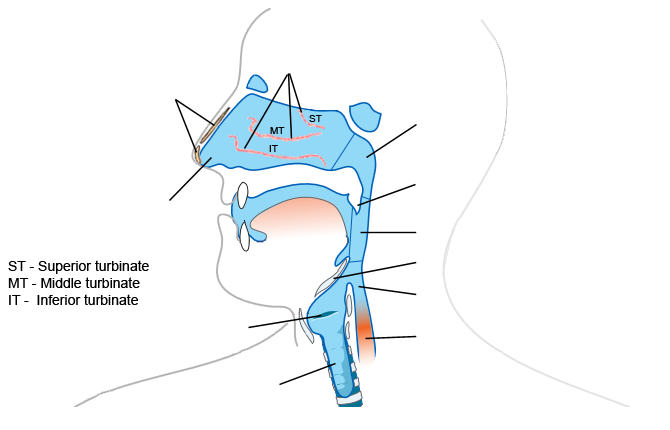Mucociliary clearance in health and disease
The upper airway
The adult lung contains approximately 300 million alveoli, which spread out would cover a surface area of 80 square meters, or the size of a tennis court. It is these millions of tiny alveoli that are the primary sites of gaseous exchange in the lungs. It is imperative therefore that their patency is maintained and they are protected from invasion by foreign bodies or particles. The defence system of the lungs is so effective that the airways below the level of the larynx, or vocal cords, are relatively sterile.
Before considering how the pulmonary defence mechanisms work, lets first familiarise ourselves with the anatomy of the upper respiratory tract and airways.
In the image below, drag all the labels in the box on the right to the ends of the label lines, as you think is correct. Click on Submit Answer to check your score. Correct labels are white, incorrect labels are grey. Keep moving the labels around and clicking on Re-score until you get 11 out of 11...

The upper respiratory tract consists of the nose and mouth, which allows the passage of air backwards to the pharynx. The inspired air is then funnelled through the larynx where it then enters the trachea and lungs.